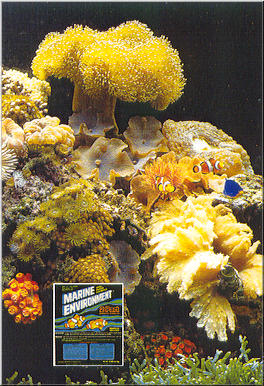MARINE SALTS
A: 1) A sloppy operator loading raw materials at the start of the mixing process could add too much or leave out important parts of the formula. 2) The batch of chemistry was not mixed properly. 3) The type of mixing equipment is incorrect. Whatever the reason, the most important thing a marine salt should be is a consistent blend of elements that is near perfect relation to natural sea water. Q: Can I use supplements to improve a salt mix that is lacking certain elements or out of balance? A: No. Supplements are formulated to be used with marine salts that are in balance to NSW. If a marine salt is low, excessive or varies in major elements, it is basically useless at best and harmful more often than not. Q: Why do some marine salts contain boron/borate, and others do not? A: Boron/borate is an antiquated approach to pH control. There is a great concern about the presence of boron in marine salts and buffers. See Phosphate & Borate in Synthetic Seawater. Q: What causes brown algae and how do I get rid of it? A: Brown algae or diatoms can be caused by silicates or silicon in a low grade marine salt. Some marine salts use low purity raw materials. This can introduce silicates/silicon (dirt) into the formula. Several brands of marine salts vary in the amount of silicates/silicon from batch to batch. Test results indicate these brands are: Instant Ocean®, Reef Crystals® and Kent® Salt. The best thing to do is to make water changes using a better (cleaner) marine salt. See: Marine Environment®, BIO-SEA®, Coral Marine™. Q: What is the cause of red or slime algae and how do I get rid of it? A: Red algae is usually a sign of cynobacteria. Many marine salts contain silicates/silicon or other impurities. This is a major cause of red algae. As with other undesirable algae, siphon it out of the tank, off decorations, and siphon clean the gravel. Make water changes with a quality marine salt. Do not use algae stimulants in a futile effort to turn brown, red, blue or slime algae into a beneficial green culture. This will not work. Some products claim to remove or control red slime algae. Avoid these as they only change water chemistry and cost you money. Just use the proper marine salts and red, brown, blue and slime algae will not be a problem. Q: How can I lower nitrates? I am using power heads with an undergravel filter. A: With your present equipment, periodically siphon clean 1/3 of your gravel. In two weeks, make a 25% water change with a quality marine salt. Do this every month for three months. Avoid cleaning more than 1/3 of your gravel at a time. This will retard the biological growth of your undergravel filter. Avoid cleaning gravel and making water changes at the same time. This could result in a nitrite buildup. Q: I am using a trickle filter with bio balls. The tank is biologically stable and running great. I am now getting a nitrate buildup. What should I do? A: Make a 25% water change using a quality marine salt. Take 50% of the bio balls out of your filter and wash them in the old water you are discarding. Washing bio balls in discarded water will not kill off nitrifying bacteria. In three months, clean the other half of the bio balls when you make your monthly routine water change as before. Q: Can chemical filter resins lower phosphates and nitrates? A: No. Some work with fresh water. Some do not work at all. |
